18+ Sample Digital Advertising Contract
-
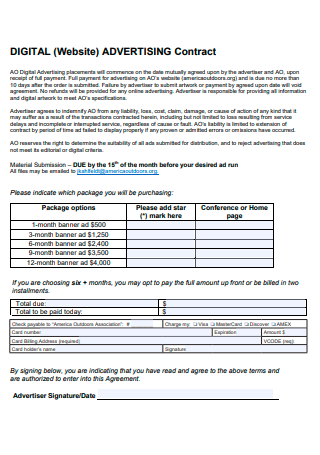
Digital Website Advertising Contract
download now -

Digital Out of Home Advertising Contract
download now -
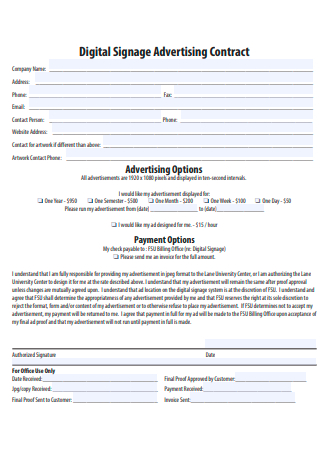
Digital Signage Advertising Contract
download now -
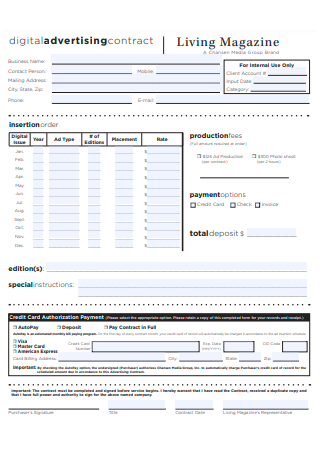
Formal Digital Advertising Contract
download now -
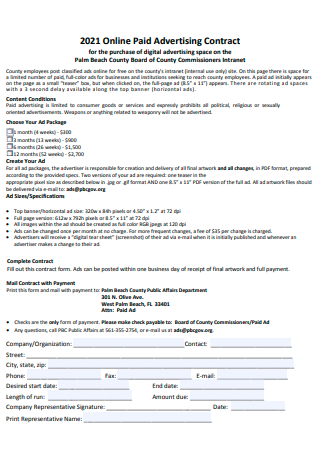
Digital Online Paid Advertising Contract
download now -
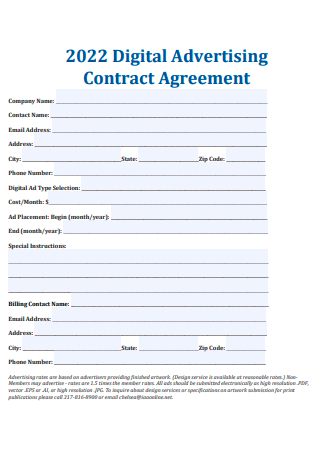
Digital Advertising Contract Agreement
download now -

Digital Program Advertising Contract
download now -

Digital Magazine Advertising Contract
download now -
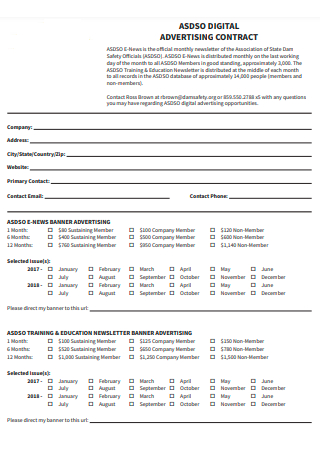
Digital Advertising Contract Example
download now -
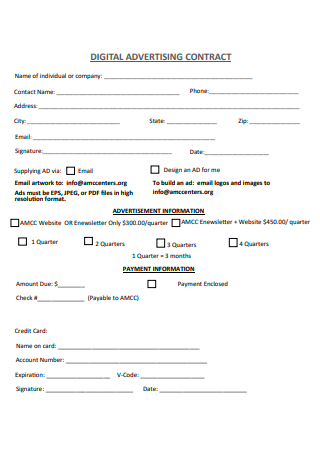
Sample Digital Advertising Contract
download now -
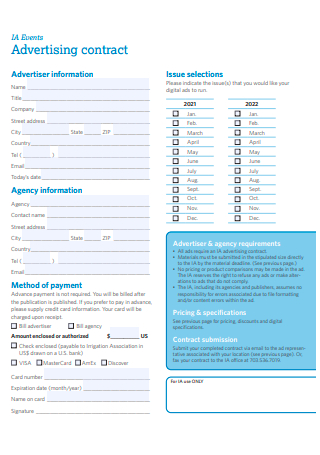
Simple Digital Advertising Contract
download now -
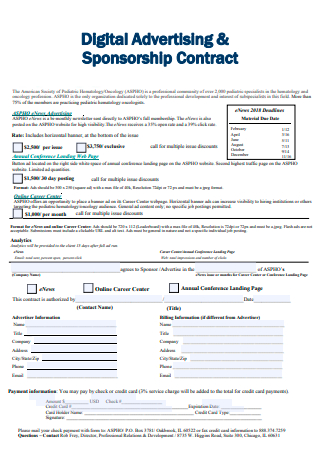
Digital Advertising and Sponsorship Contract
download now -
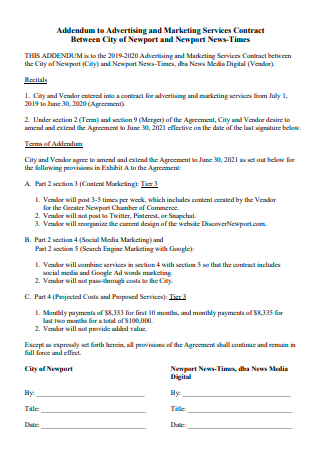
Digital Advertising and Marketing Services Contract
download now -

Magazine Print and Digital Advertising Contract
download now -
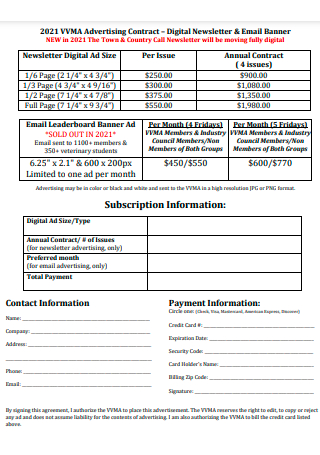
Digital Newsletter and Email Banner Advertising Contract
download now -
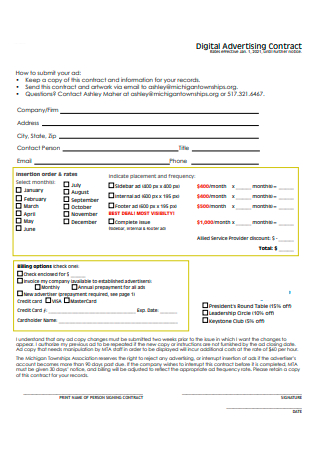
Standard Digital Advertising Contract
download now -
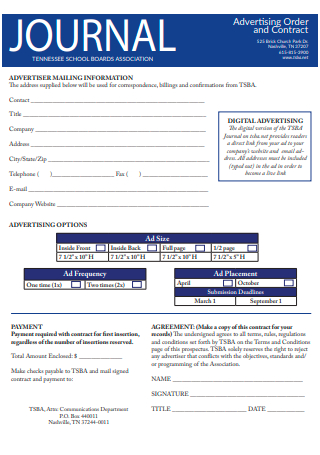
Digital Advertising Order Contract
download now -
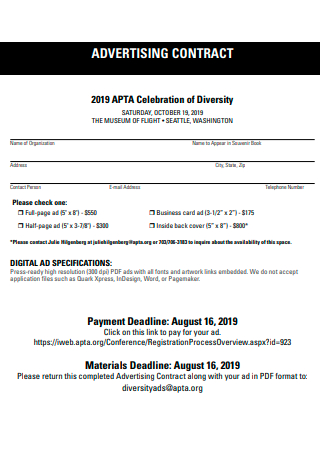
Draft Digital Advertising Contract
download now -
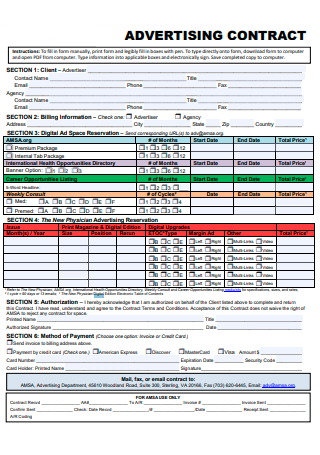
Printable Digital Advertising Contract
download now
FREE Digital Advertising Contract s to Download
18+ Sample Digital Advertising Contract
What Is a Digital Advertising Contract?
What Is the Importance of Digital Advertising Contract?
What Is Digital Advertising?
What Are the Benefits of Digital Advertising Platforms?
What Should be Included in a Digital Advertising Contract?
FAQs
As a Freelance Advertiser, Do I Need a Contract?
What if I Want to Renew the Advertising Contract?
Will My Business Benefit from Digital Advertising?
What Is the Biggest Mistake Digital Marketers Make?
What Is Native Advertising?
When collaborating with a team of marketing professionals, vloggers, influencers, or famous personalities, each brand or business needs to come up with a Digital Advertising Contract in order to make an effective digital advertisement and to also know what suits the brand.
What Is a Digital Advertising Contract?
A digital advertising contract is a legally binding agreement between you, the marketer, and your client. It shows the responsibilities of both parties while protecting the rights of each person. It is a finalized legal agreement between the client and a freelancer.
Digital advertising is known to be a broad profession where one can specialize in anything from websites, branding, advertising, social media, or any other marketing service. Regardless of the title that one person holds, every digital advertiser needs a contract.
Additionally, if you offer a broad range of digital advertising services, or maybe starting a digital advertising agency, it is a better idea to get yourself a contract template. This way you will be able to easily edit what services you are providing to the client while keeping your fundamentals protected.
Generally, a digital advertising contract is the safeguard towards doing a job and making sure it is within the expected boundaries.
What Is the Importance of Digital Advertising Contract?
Digital advertising contract is important because it will cover everything you need to do the job right, and protect you if there are any mishaps. This will make sure that you are not expected to pick up tasks that lie outside your specialty, causing you to underperform or undercharge. One will be able to set out all the main responsibilities within the contract along with protecting the rights and interests. This is especially important when you work as a freelancer or independent contractor, rather than a full-time employee.
There are plenty of specifics that go into a digital advertising agreement that you may not be aware of at first. It will outline the responsibilities of you and the client, what the scope of work is, liability and dispute resolutions, access to confidential information, intellectual property rights, termination criteria, and much more.
What Is Digital Advertising?
Digital advertising is any marketing initiative that leverages online media and the internet through connected devices such as home computers, mobile phones, or the Internet of Things (IoT). Common digital advertising initiatives center around distributing a brand message through search engines, social media, applications, email, and websites.
Recently, digital advertising often focuses on reaching a customer with progressively conversion-oriented messages across several channels as they move down the sales funnel. Preferably, advertising teams will be able to track the role each of these messages and/or channels plays in reaching their ultimate goal.
8 Types of Digital Advertising Strategies
8 common platforms for digital advertising include influencer marketing, social media, content marketing, email, pay-per-click (PPC), search engine optimization (SEO), affiliate, and mobile. Here are some digital advertising strategies:
What Are the Benefits of Digital Advertising Platforms?
Digital advertising platforms span several functions in one solution—letting marketing teams get a more integrated view of their campaigns. When choosing a digital advertising platform, consider the following advantages of partnering with the right advertising attribution software provider:
What Should be Included in a Digital Advertising Contract?
You need a solid agreement in place if you offer digital advertising services to a client. It should contain objectives, campaign-specific goals, milestones, and metrics need to be clarified, and client expectations need to be managed. Here’s what should be included in a digital advertising contract to keep a project on track:
Step 1: Well-Written Descriptions of the Work
There should be a clarity about who are in the contract, together with the nature of the relationship. This helps clarify the roles, rights, and responsibilities of the parties involved. This means outlining what the job will entail, and typically what needs to be achieved. The foundation of every good digital advertising contract is being particular about the subject matter. It is essential to also mention who is responsible for delivering the information to complete each task and project, and when you need it.
Step 2: Timescale for Deliverables
Use numbers and dates when discussing about timeframes, drafts, volume, or monotony. Aside from that, the scope could be open to interpretation and lead to impact the ability to achieve the target goals.
Step 3: Payment Details
Each party involved needs to agree on the payment terms, most particularly, how much is the rate and when that payment is. Most digital advertisers charge per hour or use a quotation template to charge a total amount based on the services provided. On a long-term advertising campaign, you may wish to set up performance-related payments. These would be conditional on the delivery of certain milestones and have a monetary increase over time due to good performance.
Step 4: Copyright and Intellectual Property
Most digital advertisers create the content on their own, so it is a good idea to put in a clause around copyright and intellectual property rights. This will cover what the client owns, how intellectual property will be handled, as well as any permissions that are given to use the final product in the portfolio.
Step 5: Confidentiality
The parties involved will have to agree on the handling of confidential information. Confidentiality is critical to protect any personal information and company trade secrets. Setting up a non-disclosure agreement and non-compete clause will cover both party’s rights and interests.
Step 6: Termination of Contract
Each digital advertising contract will contain a section for terminating the contract. This is normally on a specific date or once a project is completed, but it is also good to outline any other reasons why a contract can be terminated earlier.
FAQs
As a Freelance Advertiser, Do I Need a Contract?
Freelance advertising jobs are likely to increase since the overall marketing industry is predicted to grow 10% by 2026. If you want security, legal protection, and clarity on the responsibilities of this line of work—you need a contract. Having an agreement at hand is always beneficial, and by making sure to have a contract, transactions, negotiations, collaborations, and communication becomes easier.
What if I Want to Renew the Advertising Contract?
Renewing an advertising contract will depend on the performance satisfaction, project scope, or whether you are using smart techniques to get an extension. This is something both parties will need to talk about in advance of the contract’s termination date.
Will My Business Benefit from Digital Advertising?
Of course, it will. Although companies in many business categories continue to approach digital advertising with skepticism, avoiding digital advertising denies the business access to the media where the majority of consumers turn to first and at all hours of the day.
What Is the Biggest Mistake Digital Marketers Make?
The primary goal of advertising is to create leads. However, in the age of digital media a brand-centric, salesy approach deflects interest in your company. Make your marketing customer-centric. Moreover, far too often, digital advertisers start and stop. You need to contribute a steady flow of content to the channels you use.
What Is Native Advertising?
Native advertising is a form of paid media where the ads match the form of the platform where they are placed. While PPC and social media ads basically qualify as native advertising; most native advertising is articles published or promoted on editorial sites. Native advertising has grown steadily because it is not ignored like display ads are and it is not filtered by ad blockers.
Digital advertising platforms are great resources as brands attempt to be present across a multitude of channels and make sure this existence is driving value. Moreover, tools single closed-loop platform enables advertisers to measure and optimize advertising performance, sales, and engagement by providing a holistic view into the success of a campaign at every touchpoint. With the ability to track granular data like sales, media exposures, and geolocation, you can derive actionable insights that can inform decisions and guide advertising efforts in the near future. Before choosing a platform, determine your goals and KPIs to find the platform that covers the right functionality to align with your business needs.
